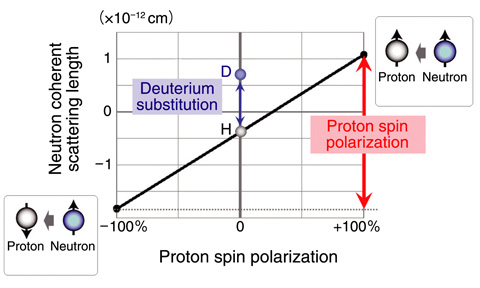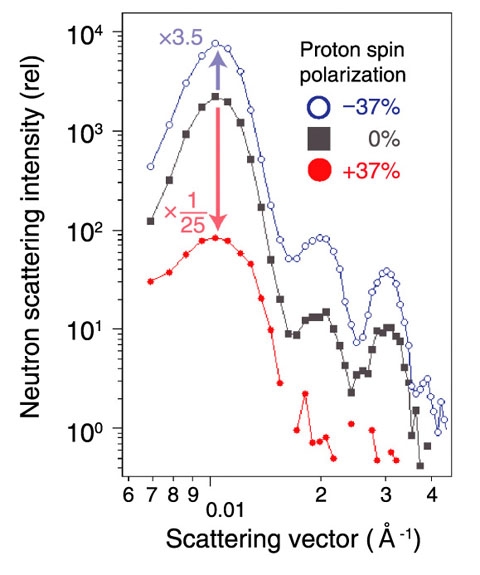
Fig.4-8 Control of neutron coherent scattering length

Fig.4-9 Small-angle neutron scattering (SANS) profiles for proton spin polarized states
Hybrid polymer materials in which fillers (reinforcing particles) are dispersed in the polymer matrix are known to show excellent mechanical properties, and they are widely used for manufacturing automobile parts and daily commodities. Recently, for better performance, several types of fillers are added to materials. However, searching for the best mixing ratio among several additives requires considerable effort. An investigation of the interactions between fillers can help in framing guidelines for blending.
Small-angle neutron scattering (SANS) can help in identifying the best mixing ratio. Structural information on each component in a multicomponent system can be abstracted by using the “contrast variation technique,” which modifies only the neutron scattering contrast of a sample while retaining its structure. For this purpose, a deuterium substitution technique (Fig.4-8, blue arrow) has been used conventionally. However, preparing deuterated plastic or rubber materials is costly. Therefore, there has been a need for another technique.
Both a neutron beam and a proton in a sample have spin. By passing a neutron beam through a magnetic multilayer mirror, a neutron beam with a single spin direction can be obtained. On the other hand, by using “dynamic nuclear polarization,” in which microwaves are radiated on a sample in a strong magnetic field and at a very low temperature, the spins of the protons in the sample can be aligned in one direction. By combining the two above-mentioned techniques, we can vary the neutron coherent scattering length considerably (Fig.4-9, red arrow).
We tried to verify the effectiveness of the combined use of both techniques by considering a simple block copolymer sample. In this sample, glassy polystyrene domain and rubbery polyisoprene domain are alternately stacked. Thus, the sample is a simplified model system for a tire-rubber material, which is discussed later.
We obtained SANS profiles of the sample with its proton spins being polarized (Fig.4-9). The scattering intensity decreased to 1/25 at a proton spin polarization of +37% and increased by 3.5 times at a proton spin polarization of -37%. This can be explained by the modification of the neutron scattering contrast resulting from the proton density difference between the two domains. The experimental results were reproduced by a theoretical calculation. We thus successfully verified that the technique works appropriately.
Now, we are applying this technique to a silica-filled styrene-butadiene random copolymer (SBR) rubber, which is widely used for manufacturing fuel-efficient tires. It is known that the fuel efficiency of the tires strongly depends on the dispersion of silica reinforcing particles in the rubber material. Therefore, it is important to evaluate the dispersion of silica quantitatively for developing tires with greater fuel efficiency. By using this technique, structural information pertaining to only silica can be abstracted. Rubber companies are now paying considerable attention to this technique.